Call Us Now! 678-928-4912

Earwig Extermination
DeKalb County, GA
*$59 initial pest control service
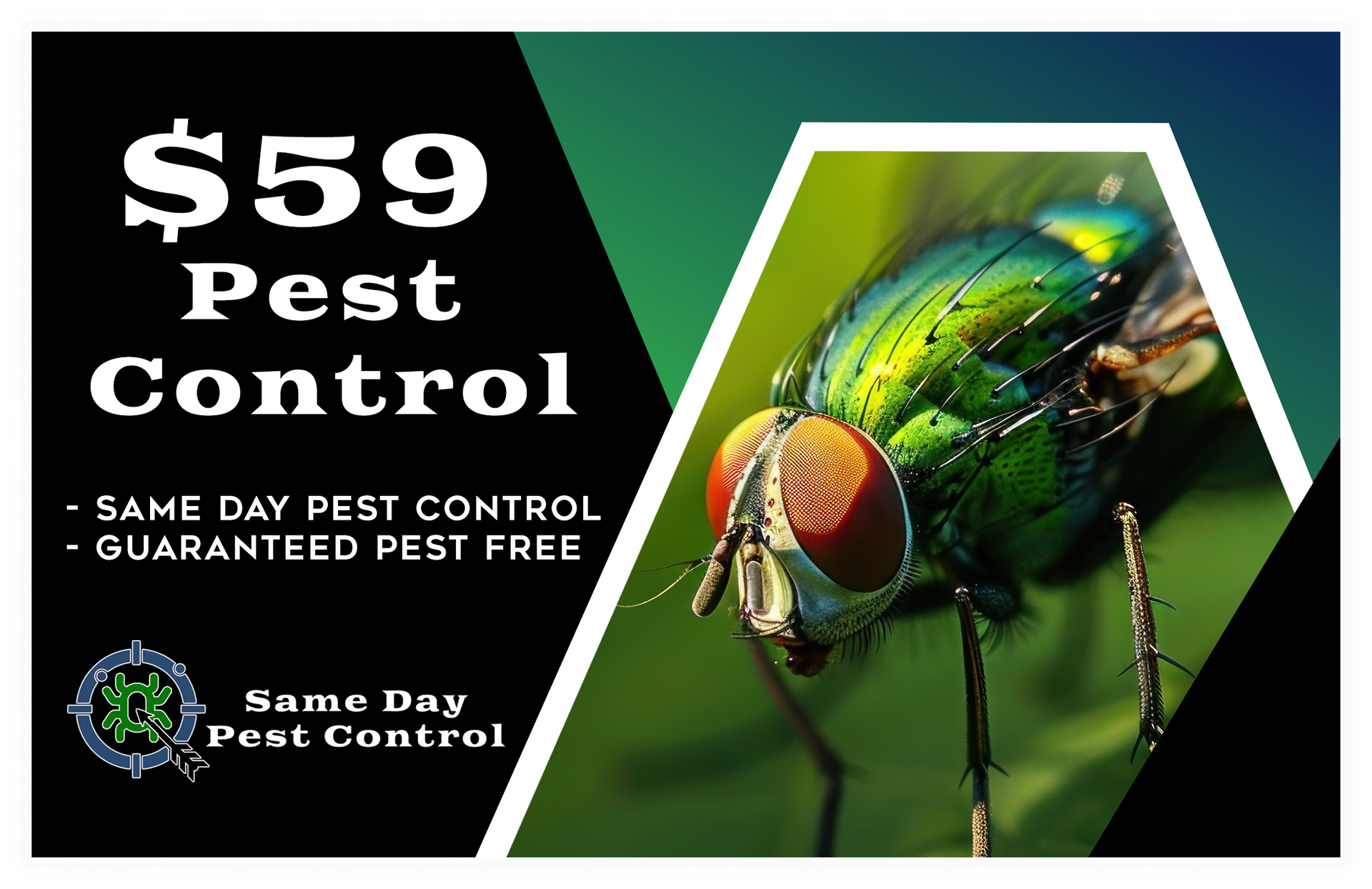
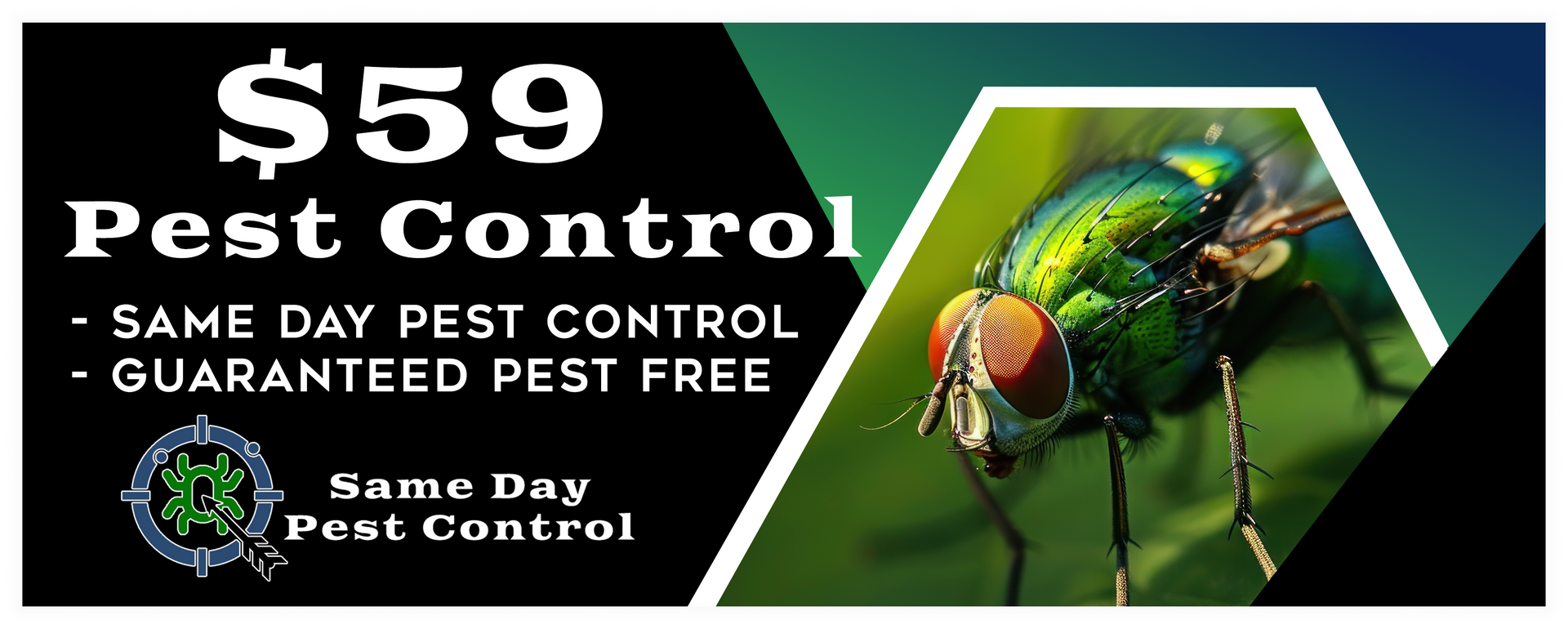
Earwig Extermination
DeKalb County, GA
$59 Pest Control!*
*$59 initial pest control service


$59 Pest Control!
Call us Now 678-928-4912
Choose Us for Pest Control
- Satisfaction Guarantee
- Pet and Eco Friendly
- Award Winning Service
- Family Owned & Operated
- Call Before Noon for Same Day Service
- Free Re-treatment When Applicable
- Licensed, Bonded, Insured
Choose Us for Pest Control
- Satisfaction Guarantee
- Pet and Eco Friendly
- Award Winning Service
- Family Owned & Operated
- Call Before Noon for Same Day Service
- Free Re-treatment When Applicable
- Licensed, Bonded, Insured
Get Started Today!
Call us Now 678-928-4912
Earwig Pest Control
Earwigs are easily recognized by their elongated bodies and distinctive claw-like pincers at the end of their abdomens. Their name originates from an old myth suggesting that these insects crawl into people’s ears while they sleep, but this is nothing more than folklore. Despite their intimidating appearance, earwigs do not pose any direct harm to humans. Their pincers are not venomous, and while they can use them defensively, they rarely cause any real discomfort.
Although they are not dangerous, earwigs can be an unwelcome sight in the home. When disturbed, some species release a foul-smelling liquid as a defense mechanism. Typically found outdoors in damp areas such as under leaves, mulch, and brush piles, earwigs often seek shelter indoors when the weather cools. Once inside, they hide under furniture, carpets, and other dark, undisturbed spaces.
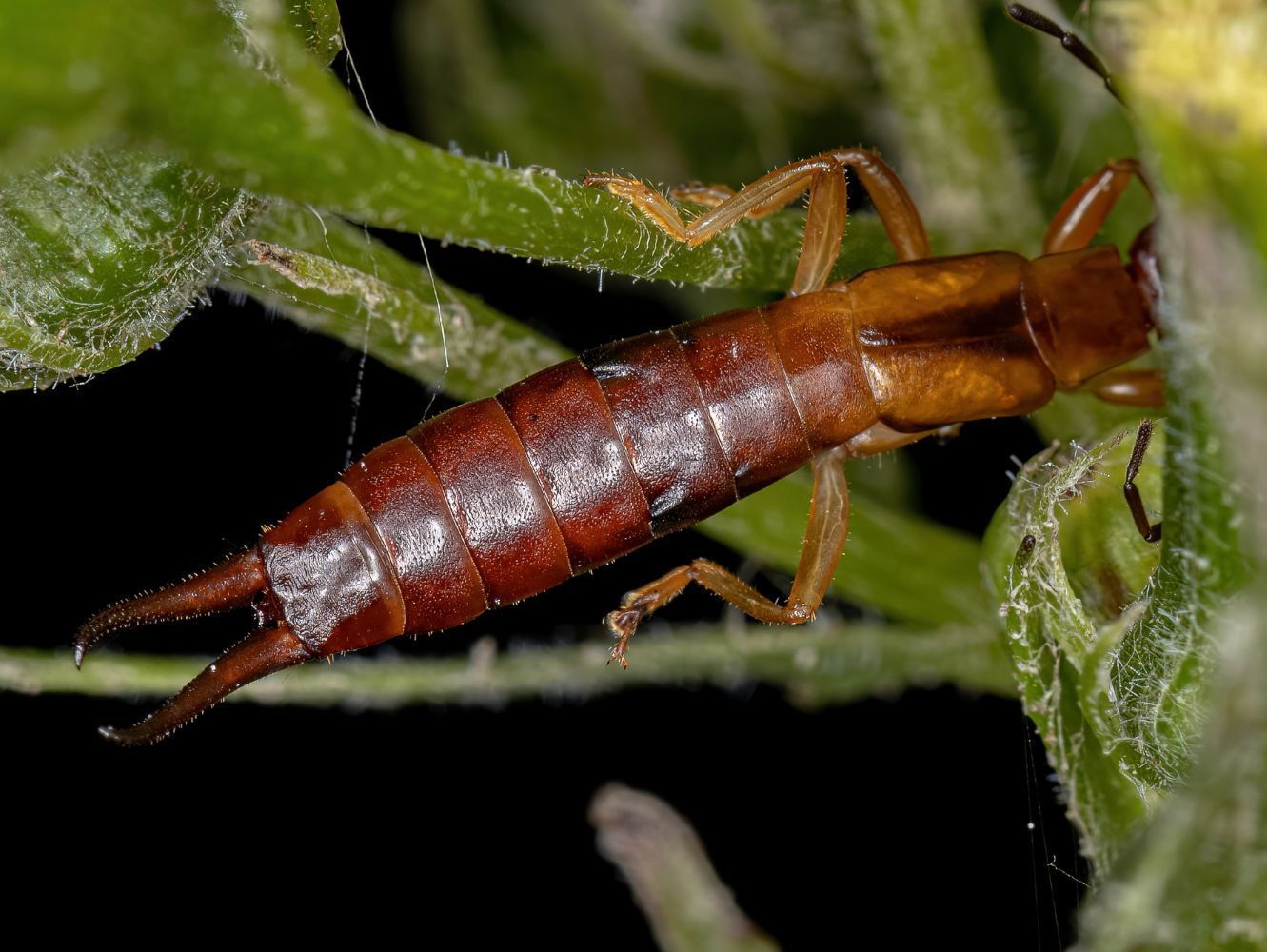
If earwigs have made their way into your home, professional pest control is the most effective way to remove them and prevent future infestations. Contact us today for expert earwig extermination services and restore comfort to your space.
Identifying Earwigs
Several species of earwigs are commonly found in the United States, with three being the most prevalent:
European earwigs are the most widespread species in the U.S. Recognizable by their long antennae and distinct pincers, they have a brownish color and are known to invade homes and gardens in large numbers.
Red-legged earwigs are more common in southern regions. These dark brown insects have yellow-tan undersides and are often seen in high populations near residential properties.
Striped earwigs prefer outdoor environments and are identified by their black and tan coloration. They have notably large pincers at the rear, making them appear even more intimidating.
All three earwig species primarily feed on decaying plant matter. They thrive in compost piles, leaf litter, and areas with abundant organic debris. While some species have wings and can fly, they mostly rely on crawling to locate food and nesting areas.
Earwigs often enter homes in search of moisture and shelter. Dry conditions, such as prolonged summer heat or drought, can drive them indoors. They are frequently spotted in kitchens and bathrooms, where water sources are readily available.
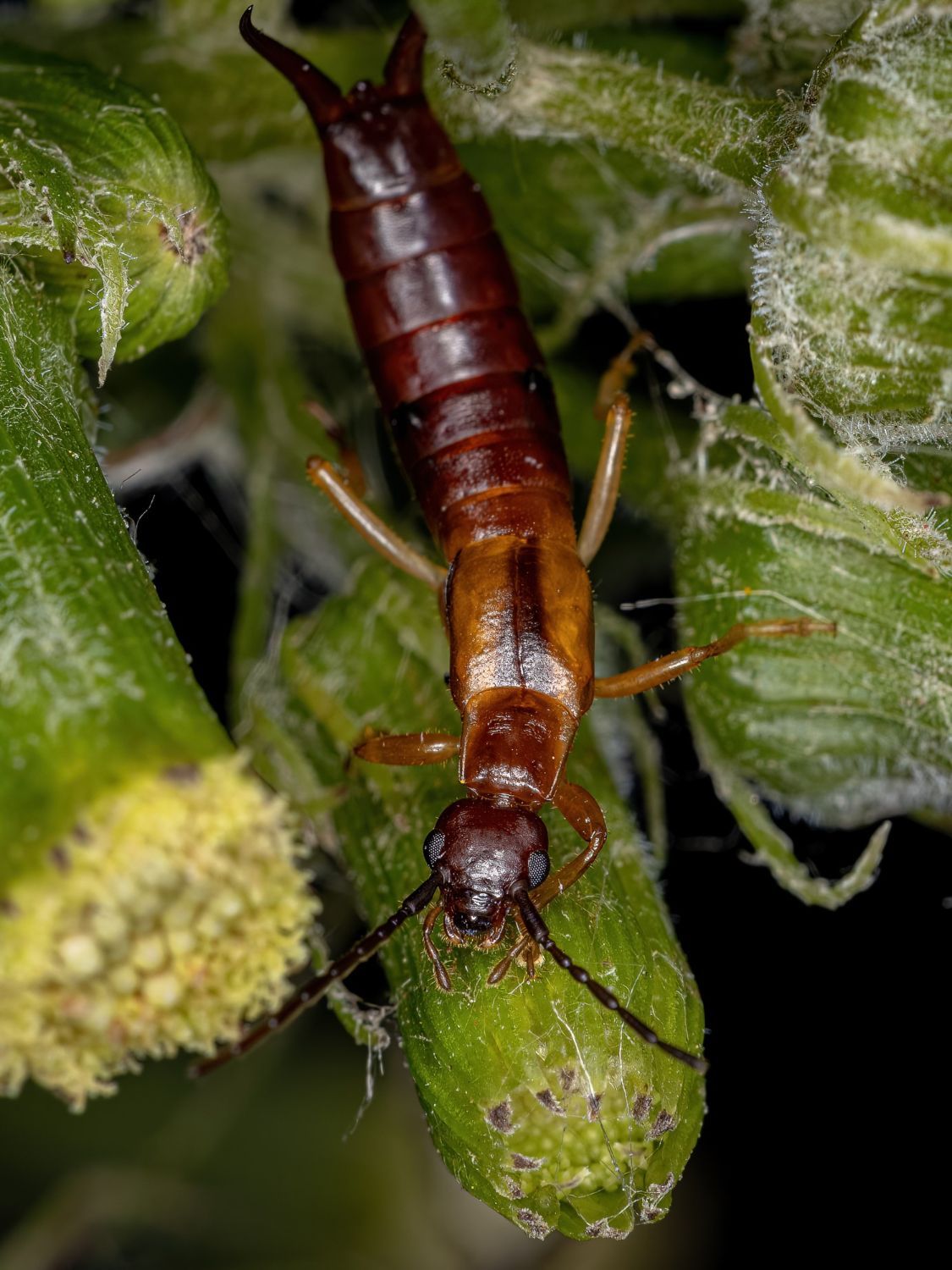
Although earwigs are not social insects like ants or wasps, they can still appear in large numbers under the right conditions. Their unsettling appearance and tendency to gather in groups make them an unwelcome nuisance in homes and businesses. Addressing an earwig problem promptly is essential, as their population can quickly grow if left unchecked.

Identifying Earwigs
Several species of earwigs are commonly found in the United States, with three being the most prevalent:
European earwigs are the most widespread species in the U.S. Recognizable by their long antennae and distinct pincers, they have a brownish color and are known to invade homes and gardens in large numbers.
Red-legged earwigs are more common in southern regions. These dark brown insects have yellow-tan undersides and are often seen in high populations near residential properties.
Striped earwigs prefer outdoor environments and are identified by their black and tan coloration. They have notably large pincers at the rear, making them appear even more intimidating.
All three earwig species primarily feed on decaying plant matter. They thrive in compost piles, leaf litter, and areas with abundant organic debris. While some species have wings and can fly, they mostly rely on crawling to locate food and nesting areas.
Earwigs often enter homes in search of moisture and shelter. Dry conditions, such as prolonged summer heat or drought, can drive them indoors. They are frequently spotted in kitchens and bathrooms, where water sources are readily available.
Although earwigs are not social insects like ants or wasps, they can still appear in large numbers under the right conditions. Their unsettling appearance and tendency to gather in groups make them an unwelcome nuisance in homes and businesses. Addressing an earwig problem promptly is essential, as their population can quickly grow if left unchecked.
Eliminating Earwigs from Your Home
Earwigs are not harmful to humans. They do not carry venom, and their pincers are not strong enough to inflict painful bites. However, they can become a frustrating nuisance when they invade homes, especially since they are a food source for other pests like spiders, scorpions, and rodents. Given the right conditions, earwigs can overwinter indoors, making infestations more persistent.
Outdoors, earwigs thrive in damp environments, often hiding under shrubs, mulch, and vegetation. They can form large underground colonies, growing their numbers rapidly. These pests typically enter homes when doors are frequently left open during warmer months or when there is heavy foot traffic between indoor and outdoor spaces. While they prefer to stay outside, cooler temperatures and seasonal changes drive them indoors, where they seek shelter in carpets, wall voids, clothing, and even bedding.
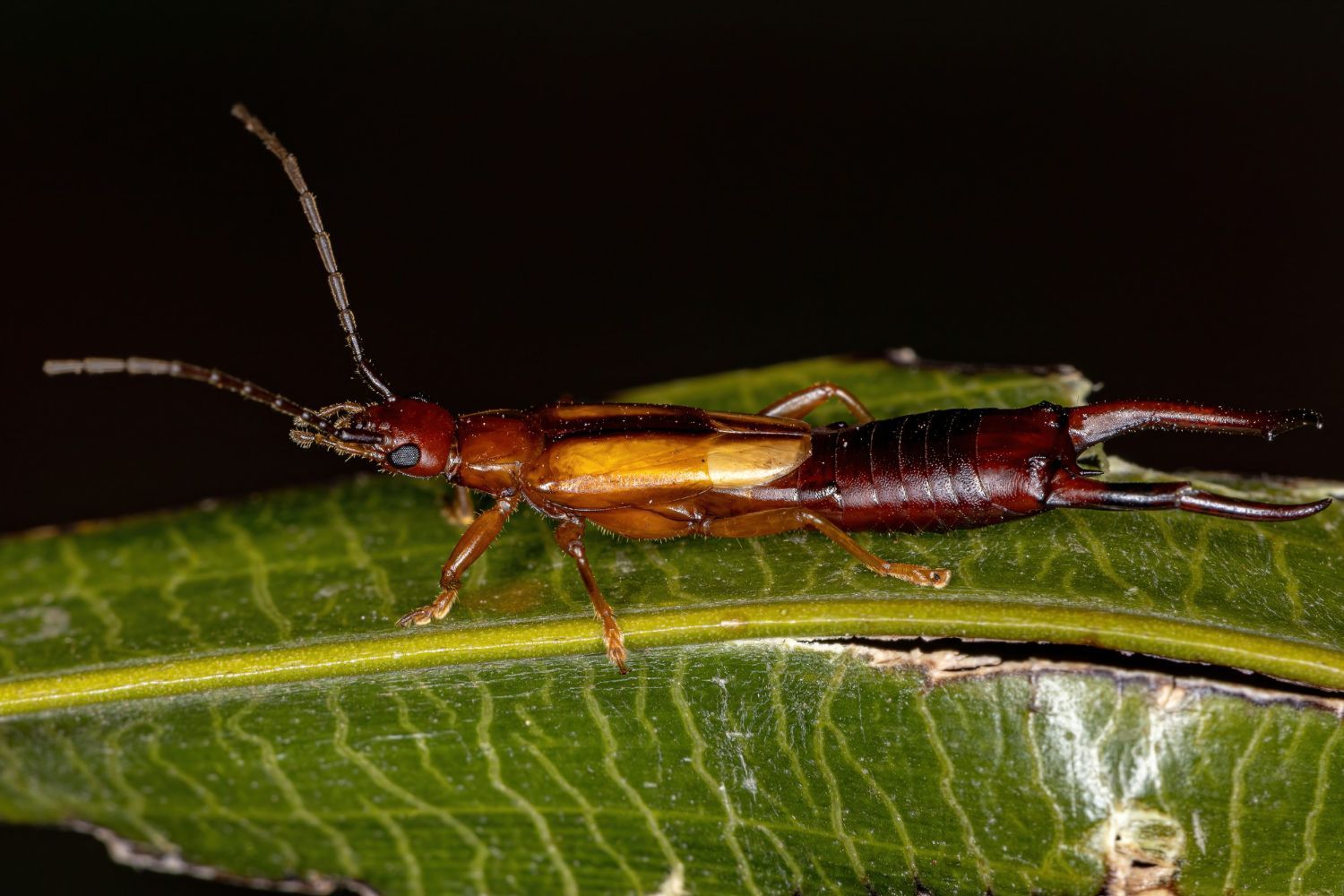
If earwigs have invaded your home, professional pest control is the most effective solution. Our experienced team specializes in eliminating earwig infestations and preventing future intrusions. Contact us today for expert pest removal services and regain control of your home.
Eliminating Earwigs from Your Home
Earwigs are not harmful to humans. They do not carry venom, and their pincers are not strong enough to inflict painful bites. However, they can become a frustrating nuisance when they invade homes, especially since they are a food source for other pests like spiders, scorpions, and rodents. Given the right conditions, earwigs can overwinter indoors, making infestations more persistent.
Outdoors, earwigs thrive in damp environments, often hiding under shrubs, mulch, and vegetation. They can form large underground colonies, growing their numbers rapidly. These pests typically enter homes when doors are frequently left open during warmer months or when there is heavy foot traffic between indoor and outdoor spaces. While they prefer to stay outside, cooler temperatures and seasonal changes drive them indoors, where they seek shelter in carpets, wall voids, clothing, and even bedding.
If earwigs have invaded your home, professional pest control is the most effective solution. Our experienced team specializes in eliminating earwig infestations and preventing future intrusions. Contact us today for expert pest removal services and regain control of your home.

Get Started Today!
Call us Now 678-928-4912
Earwig Exterminator near me
Serving DeKalb County, GA and Surrounding Areas

Decatur
Stone Mountain
Lithonia
Tucker
Clarkston
Avondale Estates
Chamblee
Doraville
Brookhaven
Dunwoody
Scottdale
Pine Lake
Stonecrest
North Druid Hills
North Decatur
Belvedere Park
Candler-McAfee
Panthersville
Redan
Druid Hills
Get Started Today!
Call us Now 678-928-4912
$59 Pest Control!
Call us Now 678-928-4912
